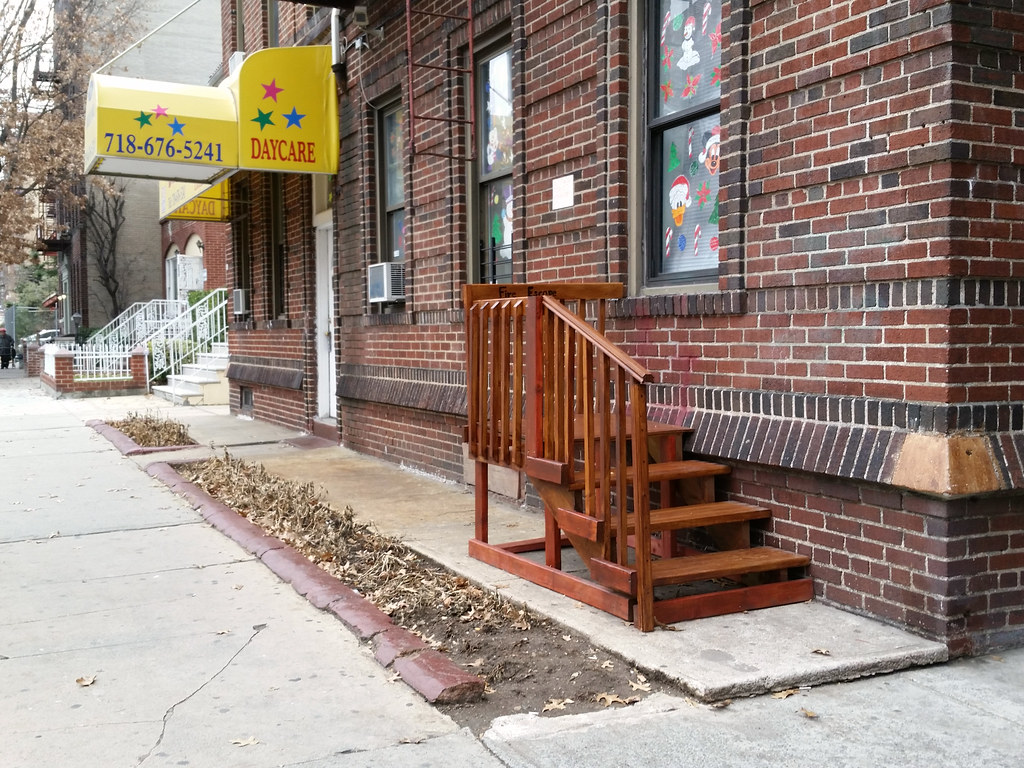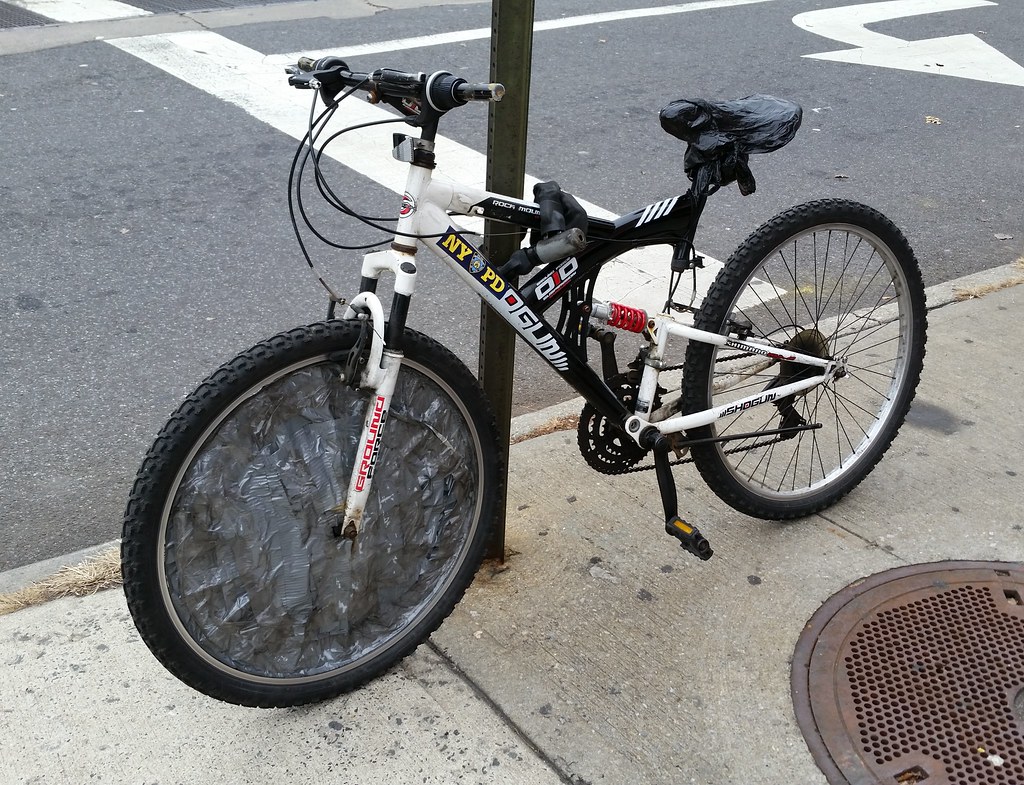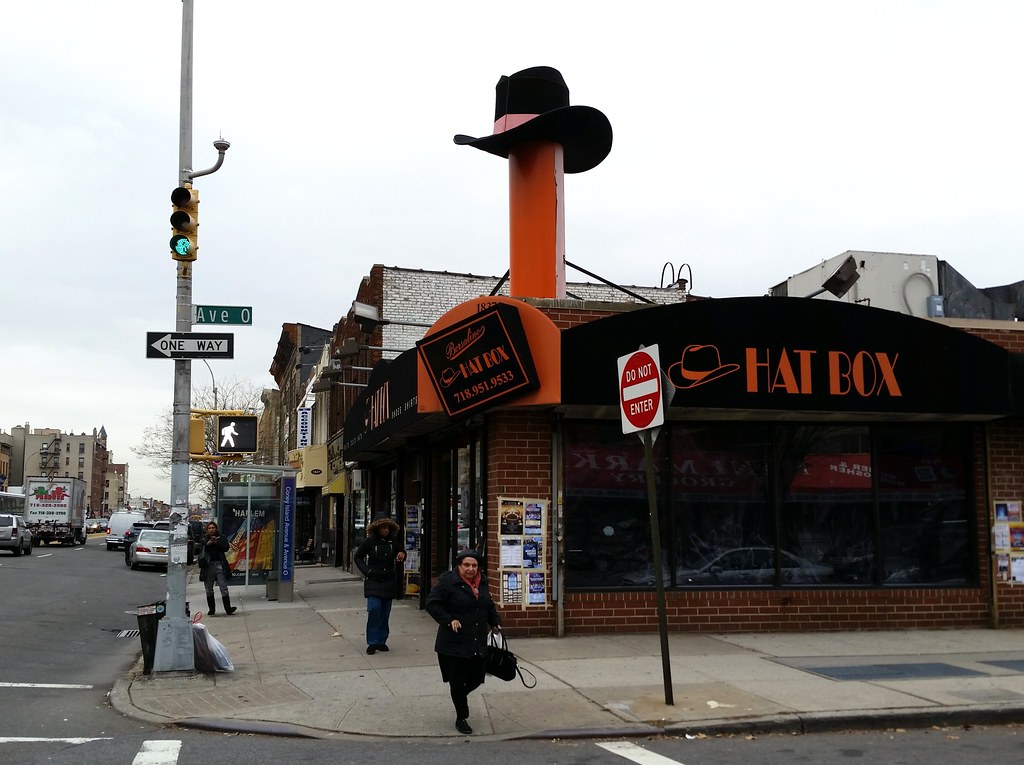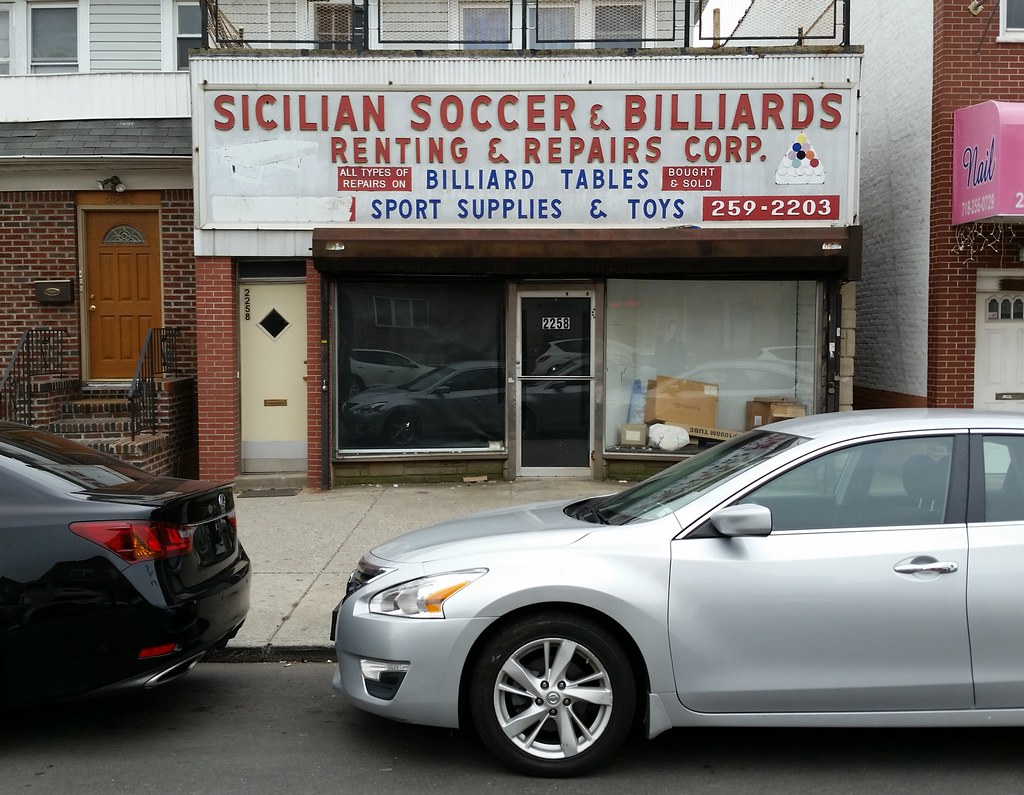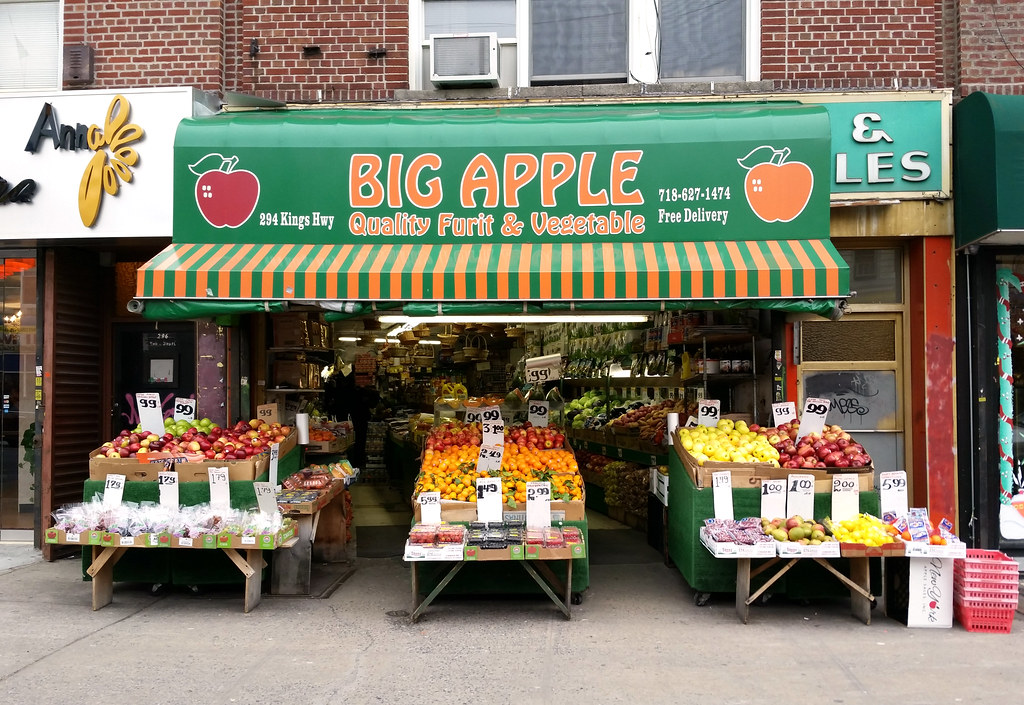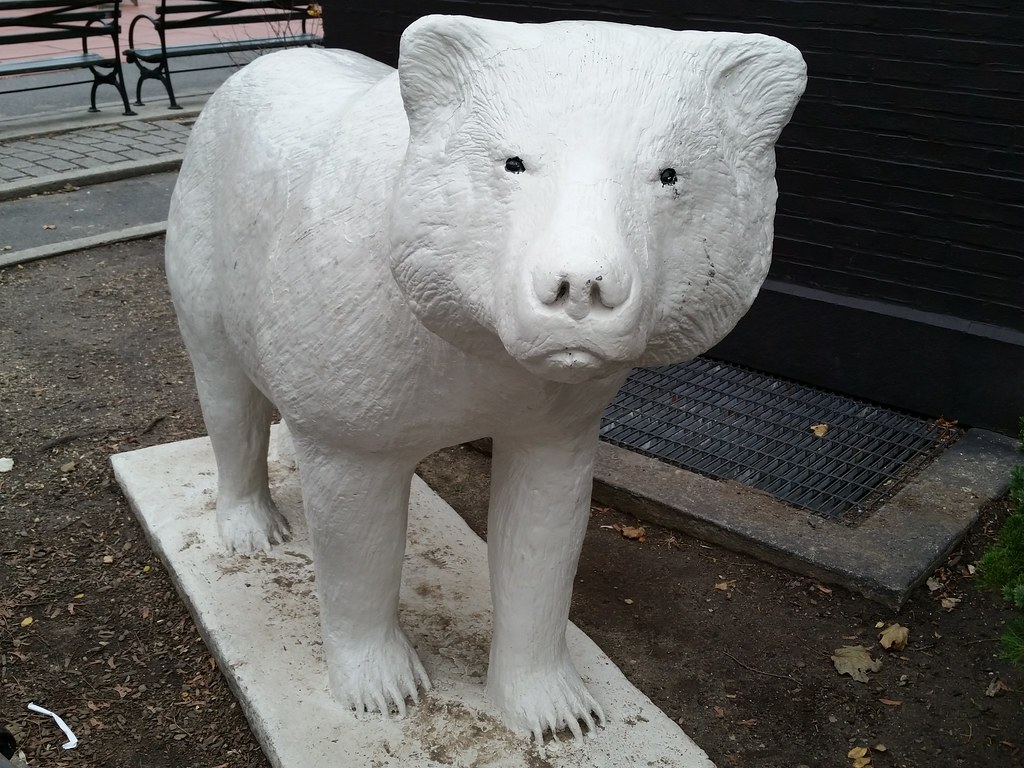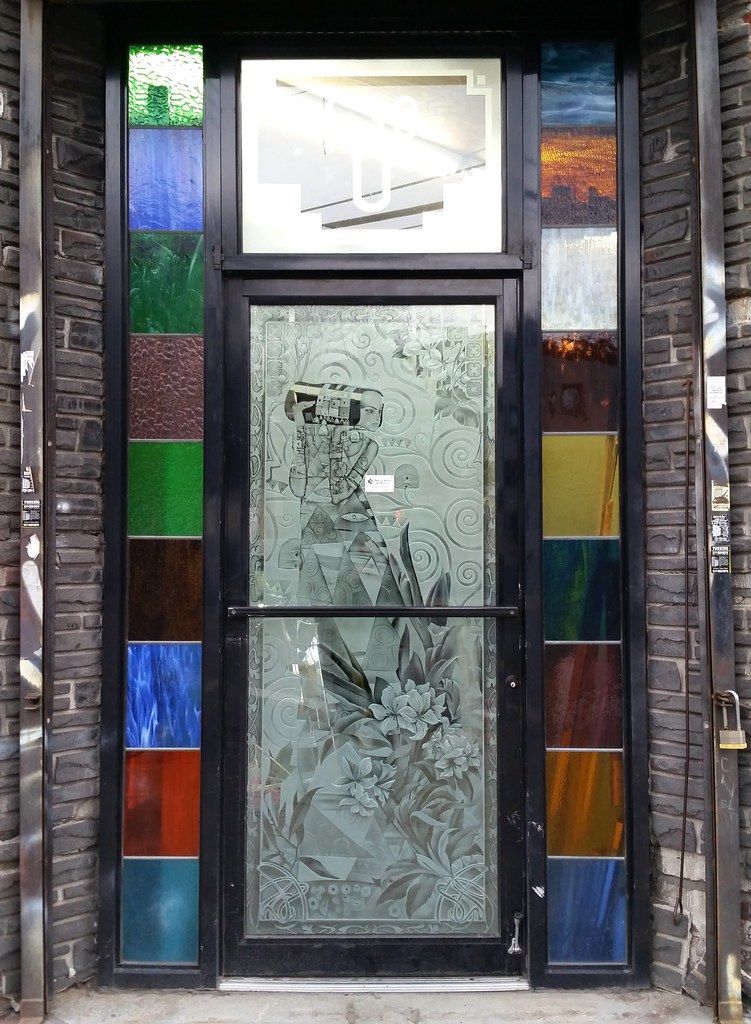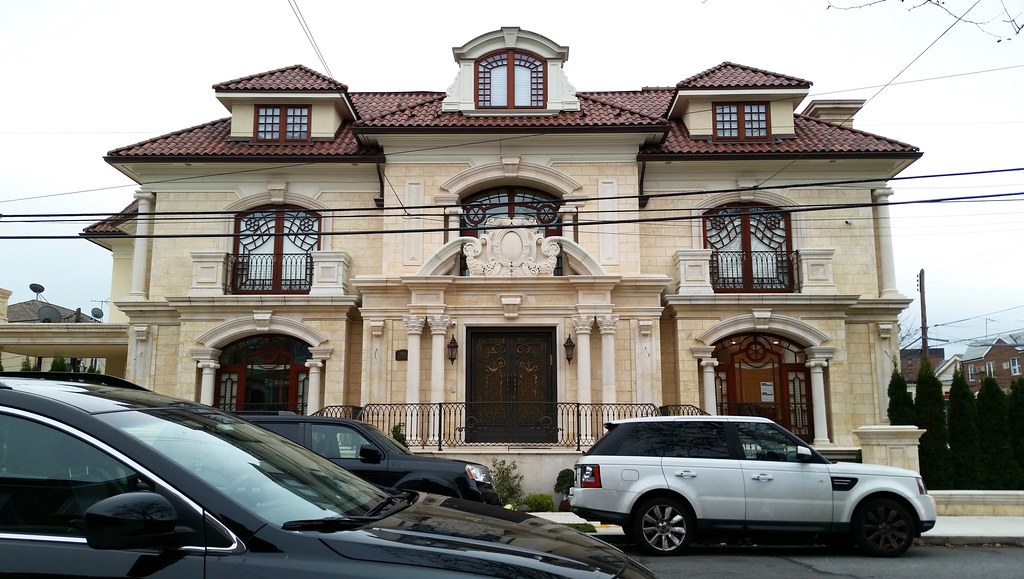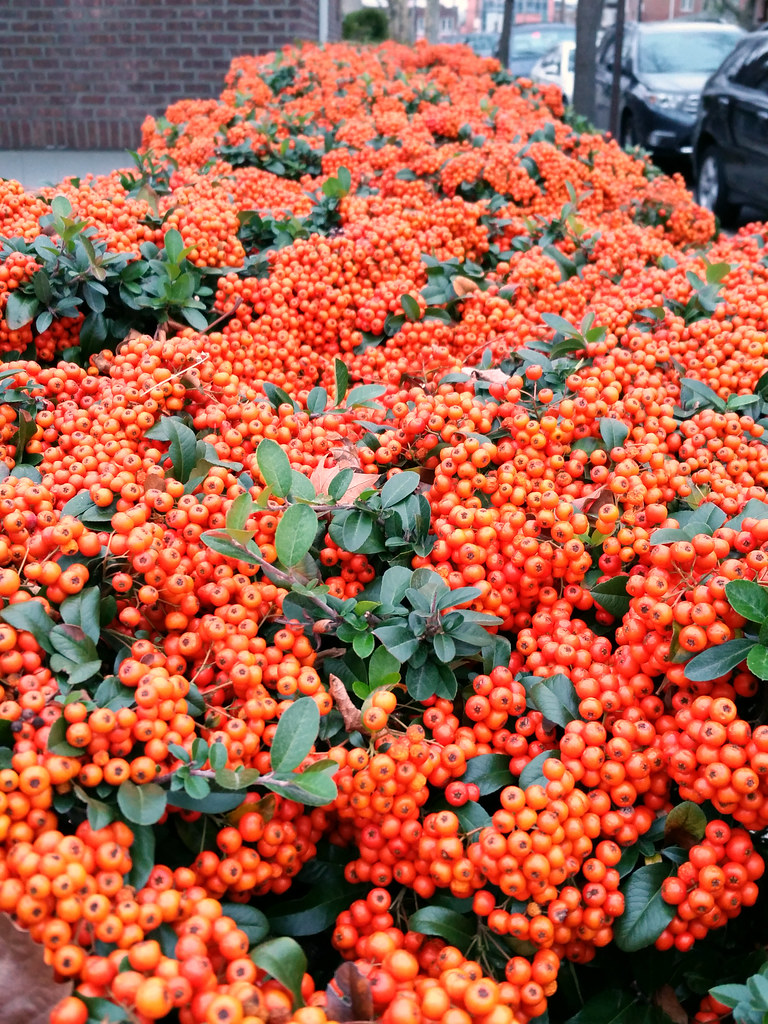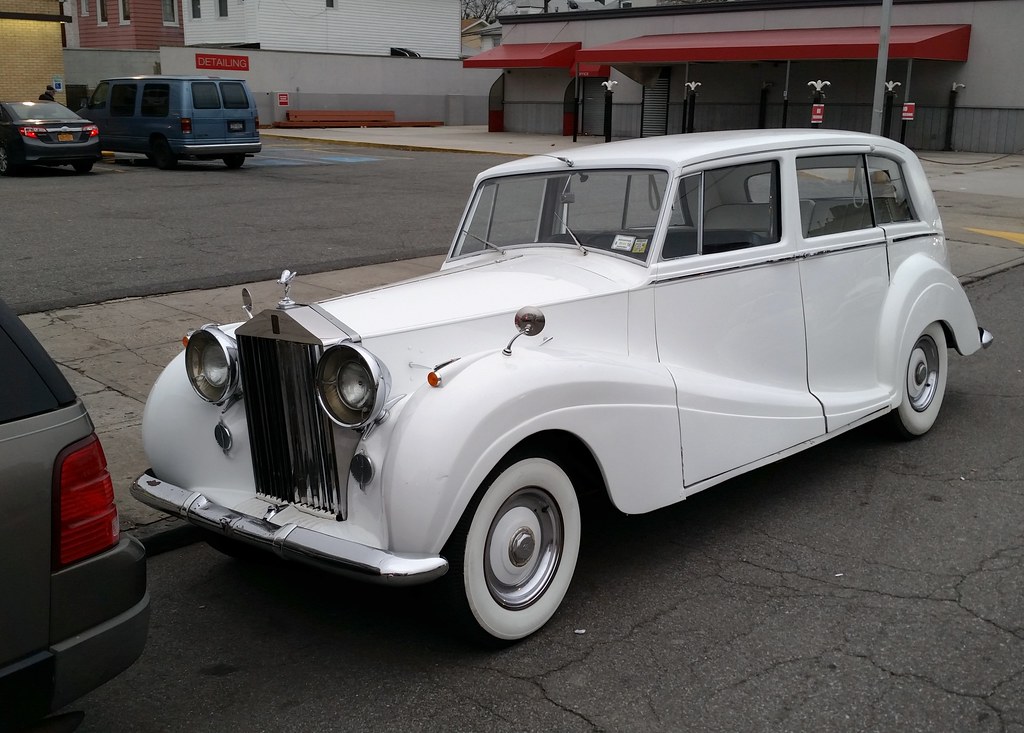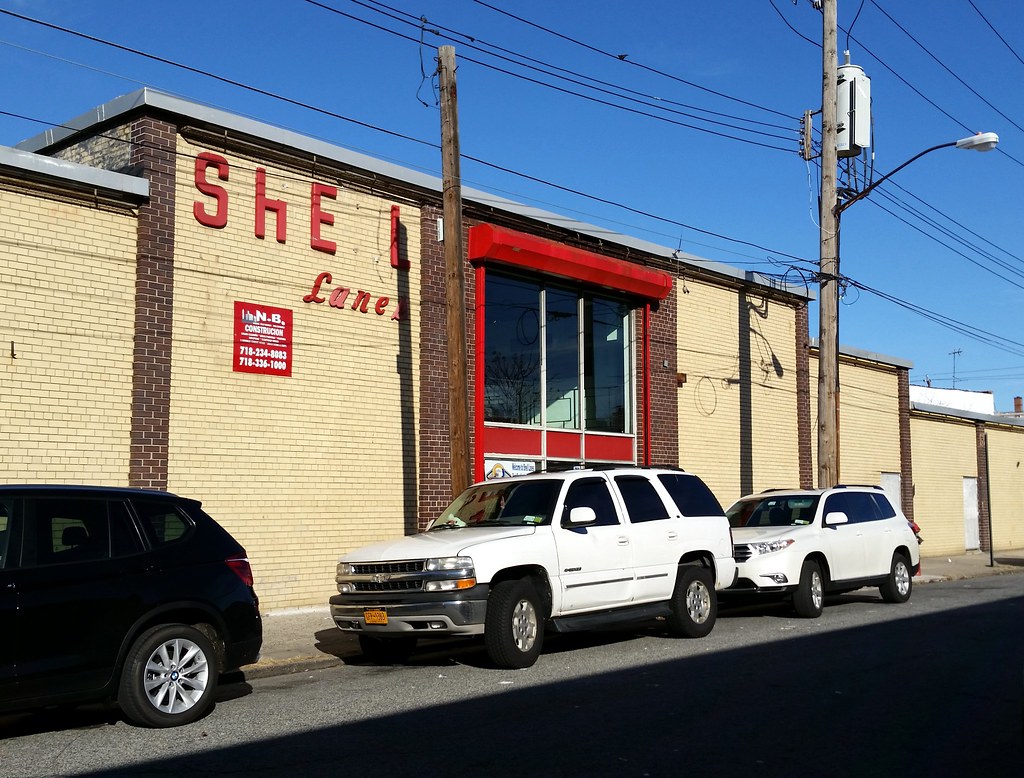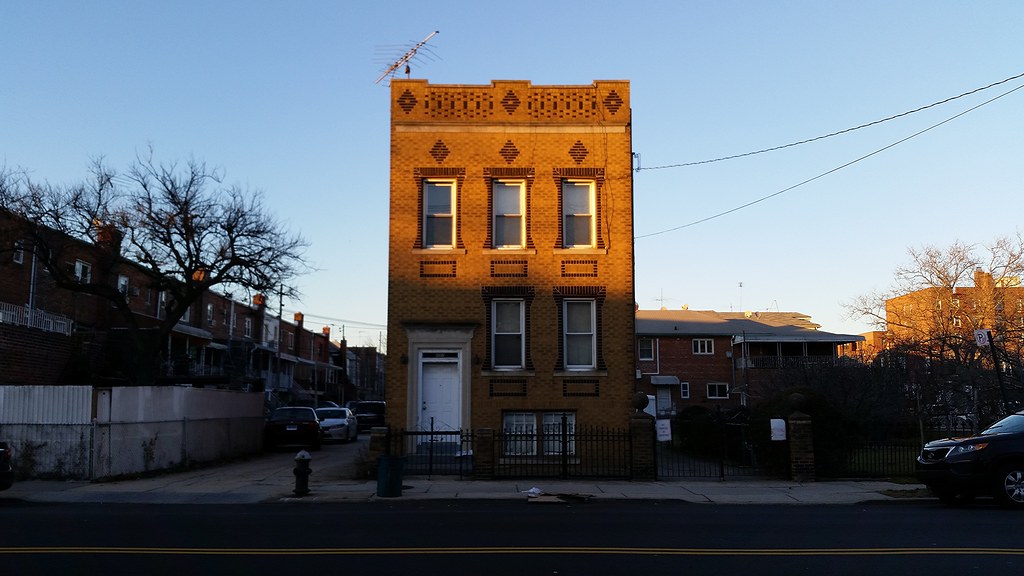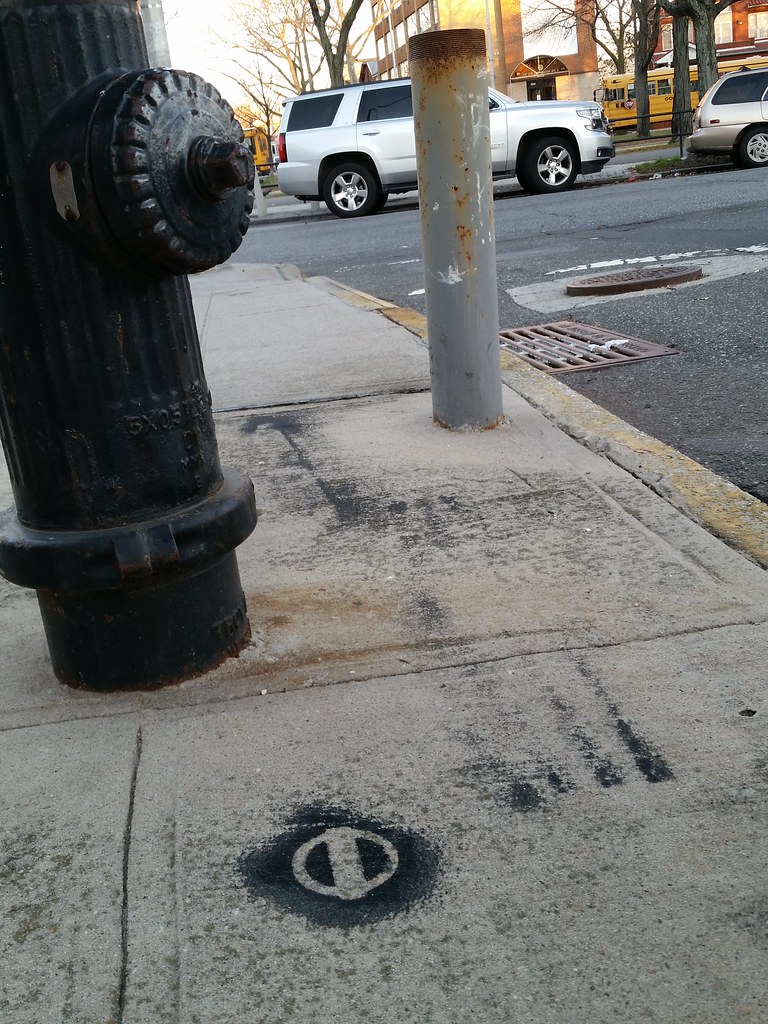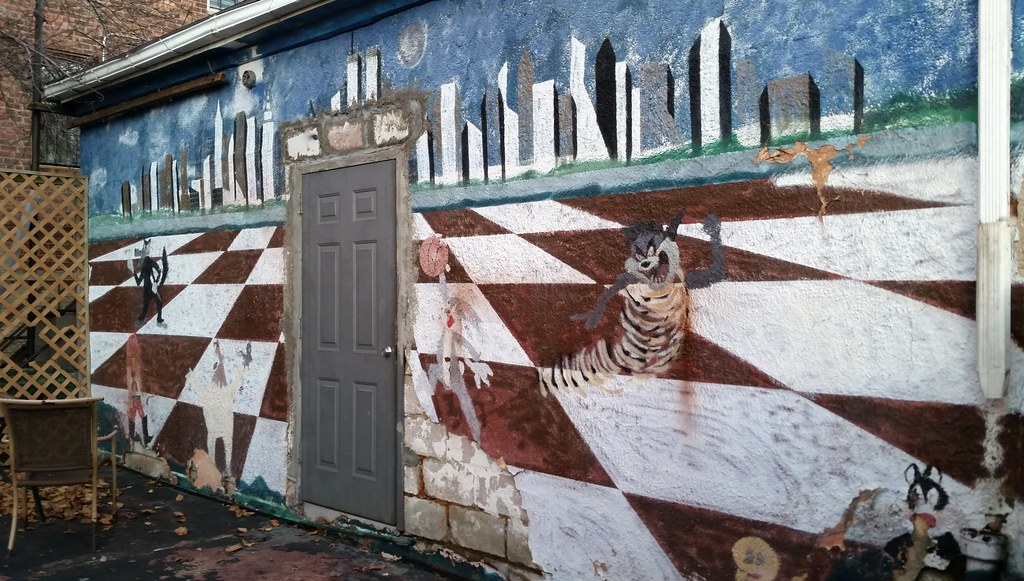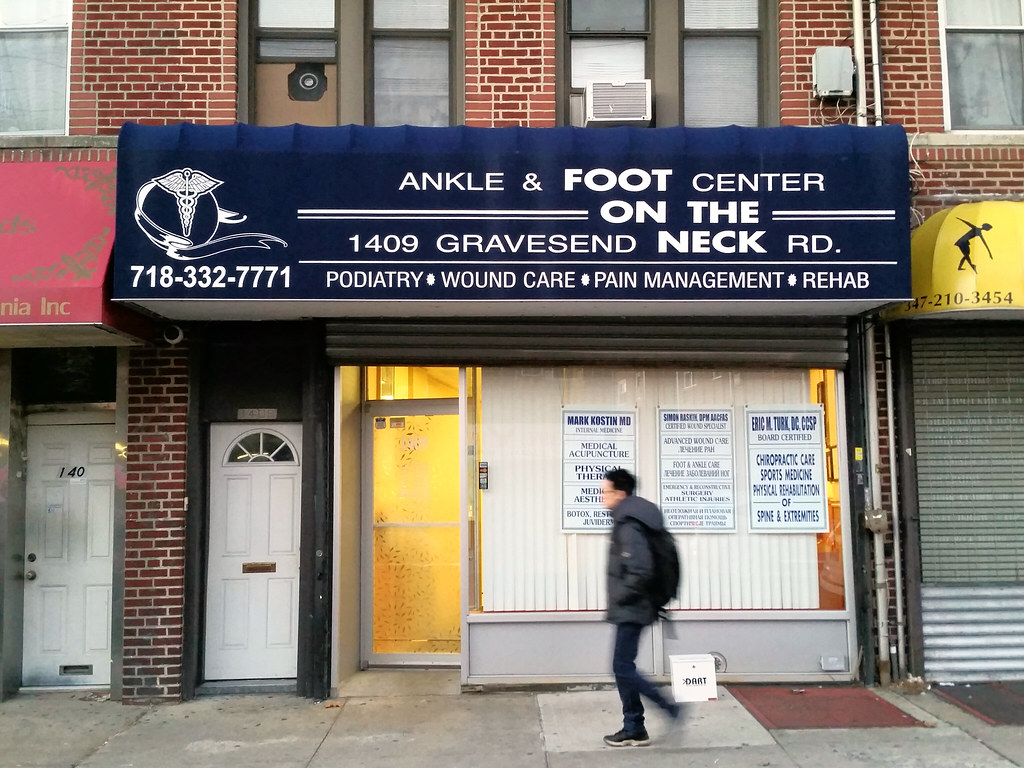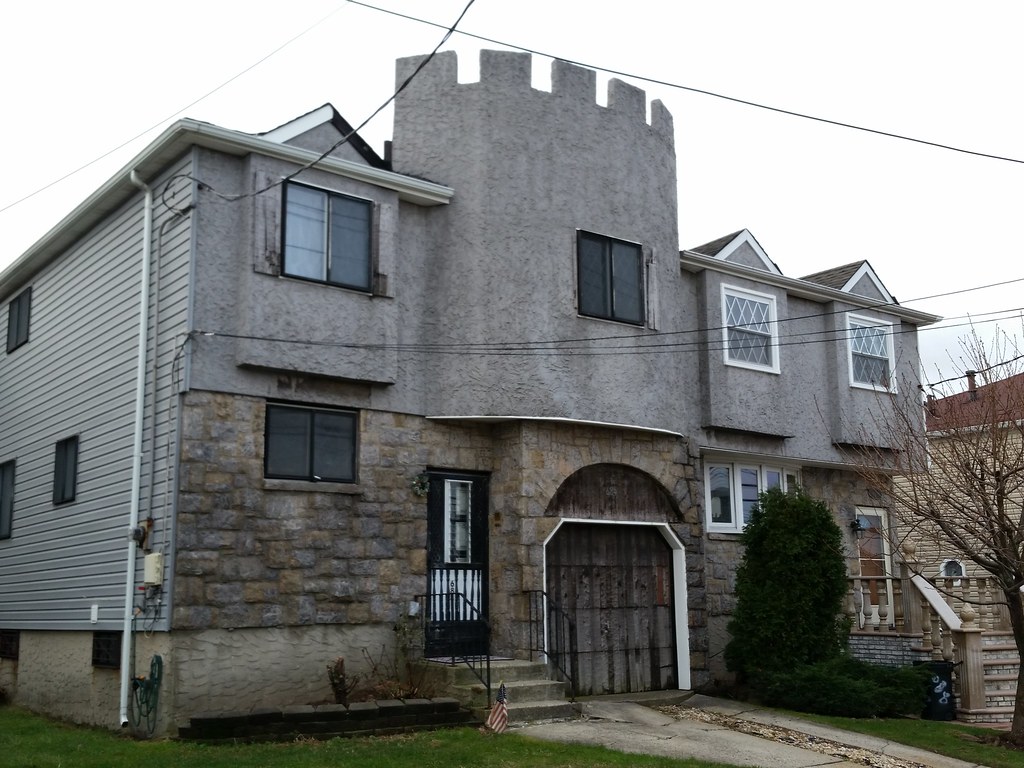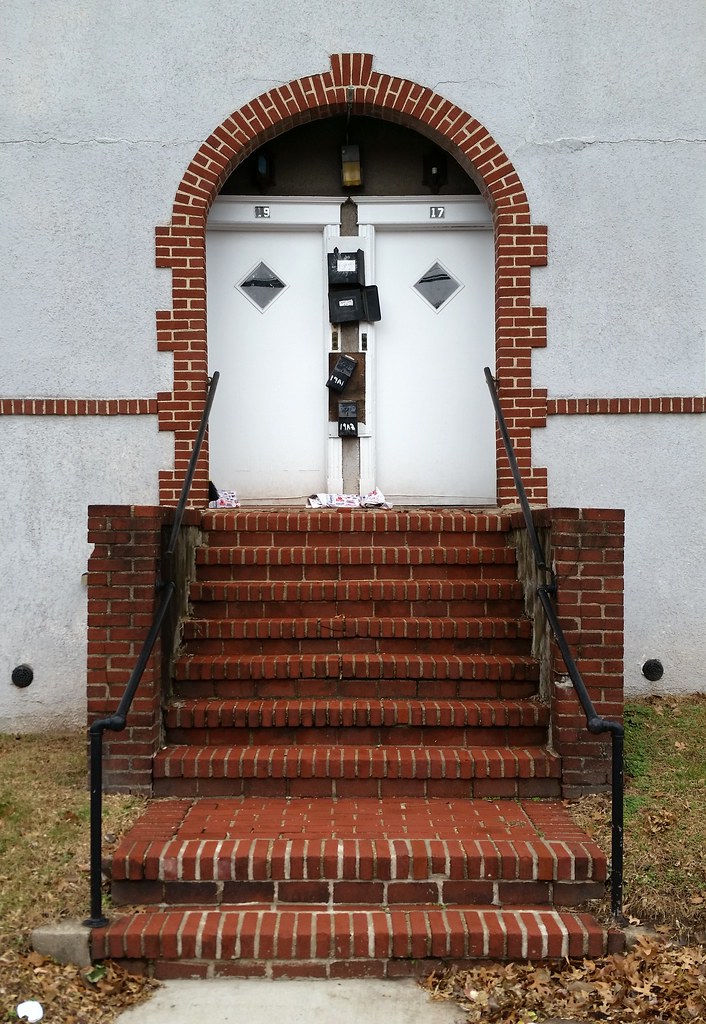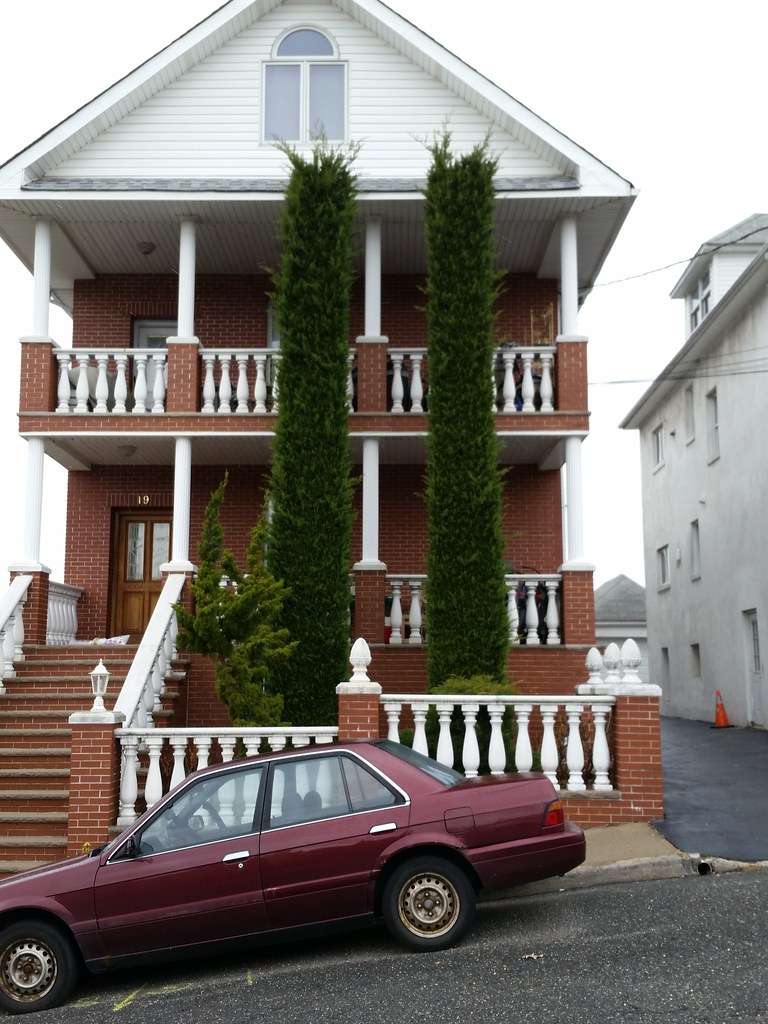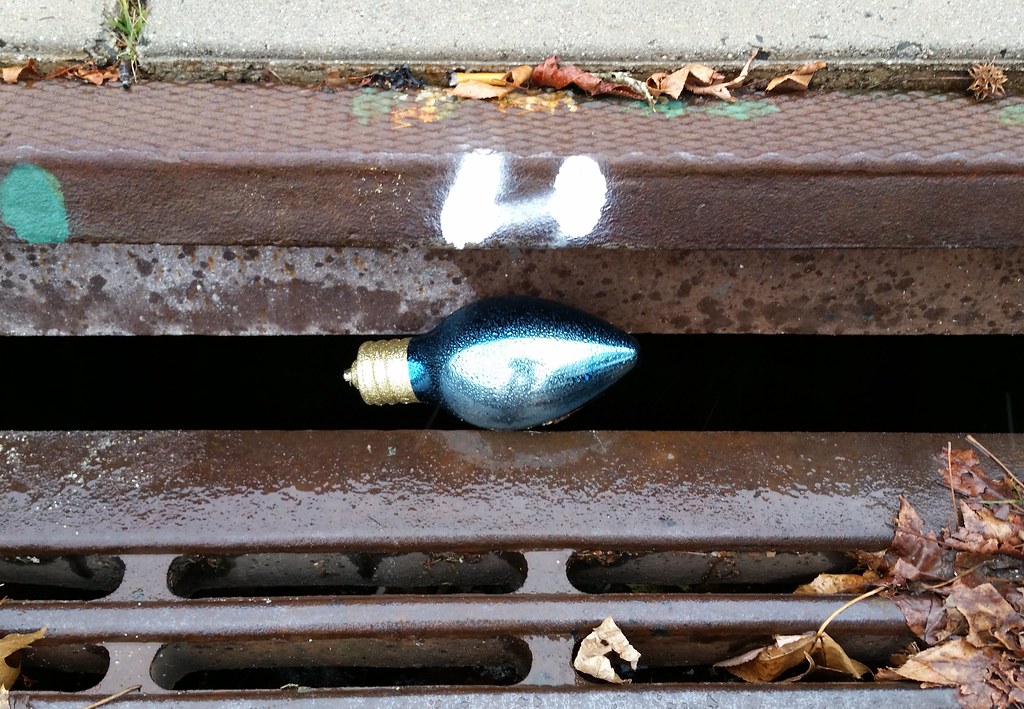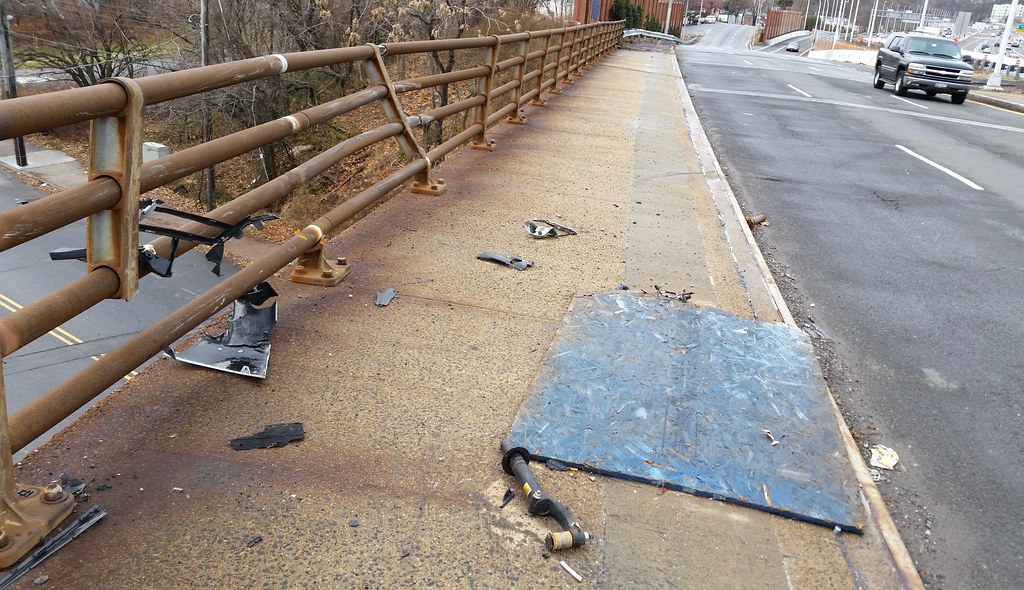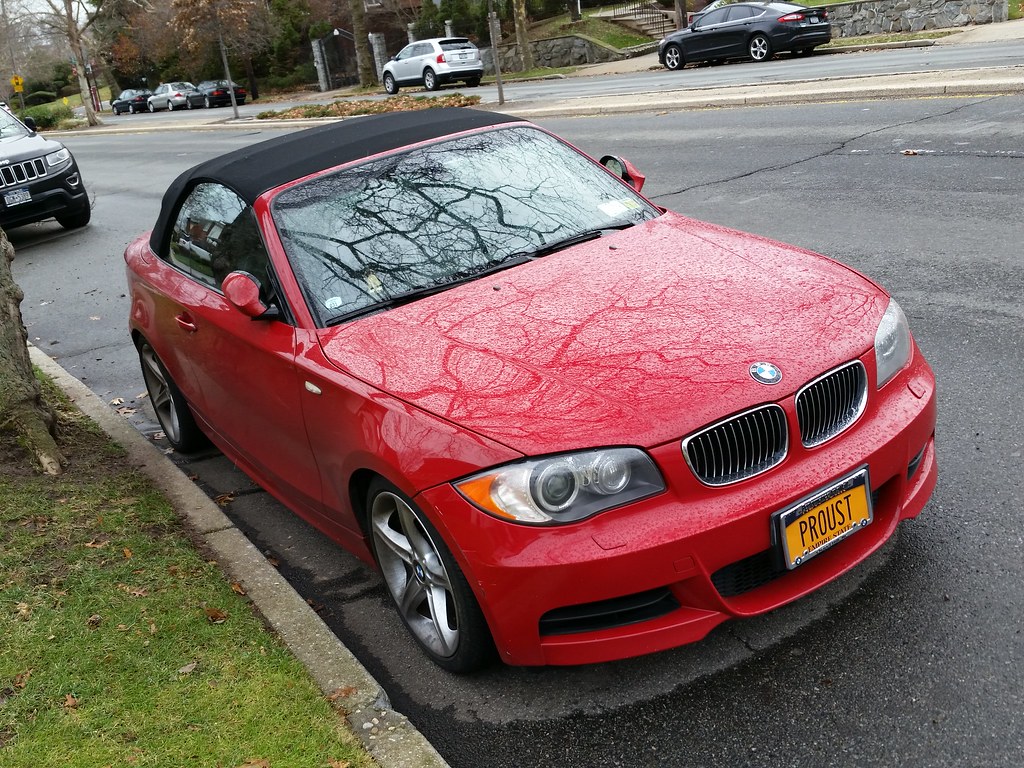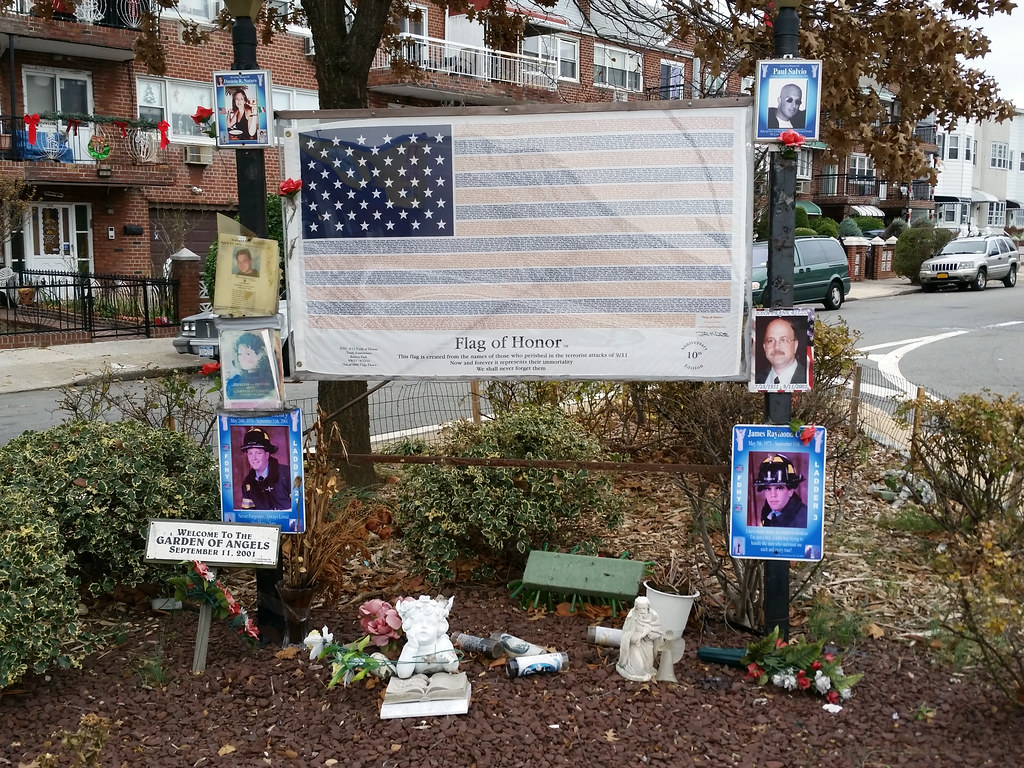
Here's a close-up. Things have changed a little since we last passed by.
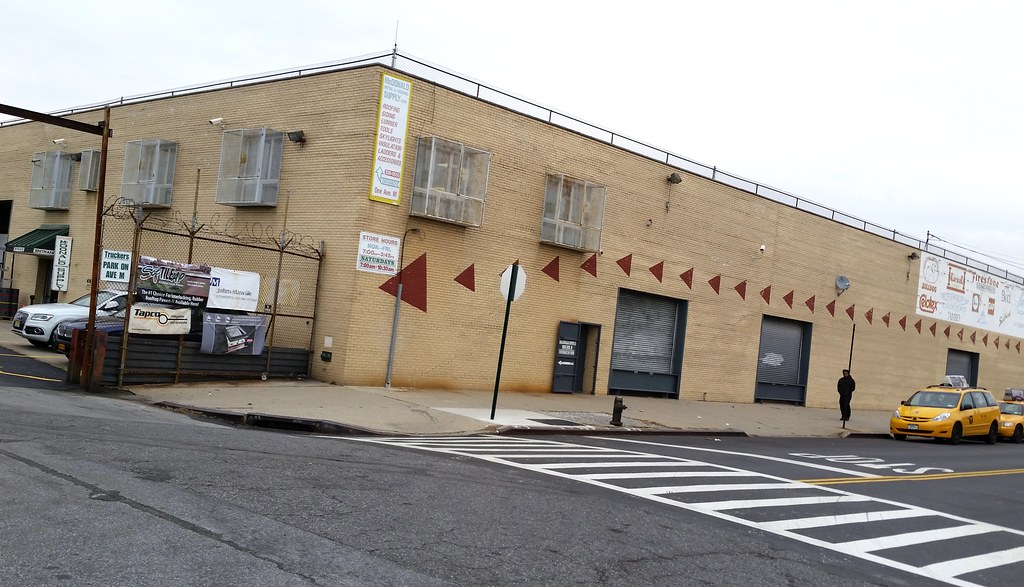
The arrows start all the way around the corner of the building.
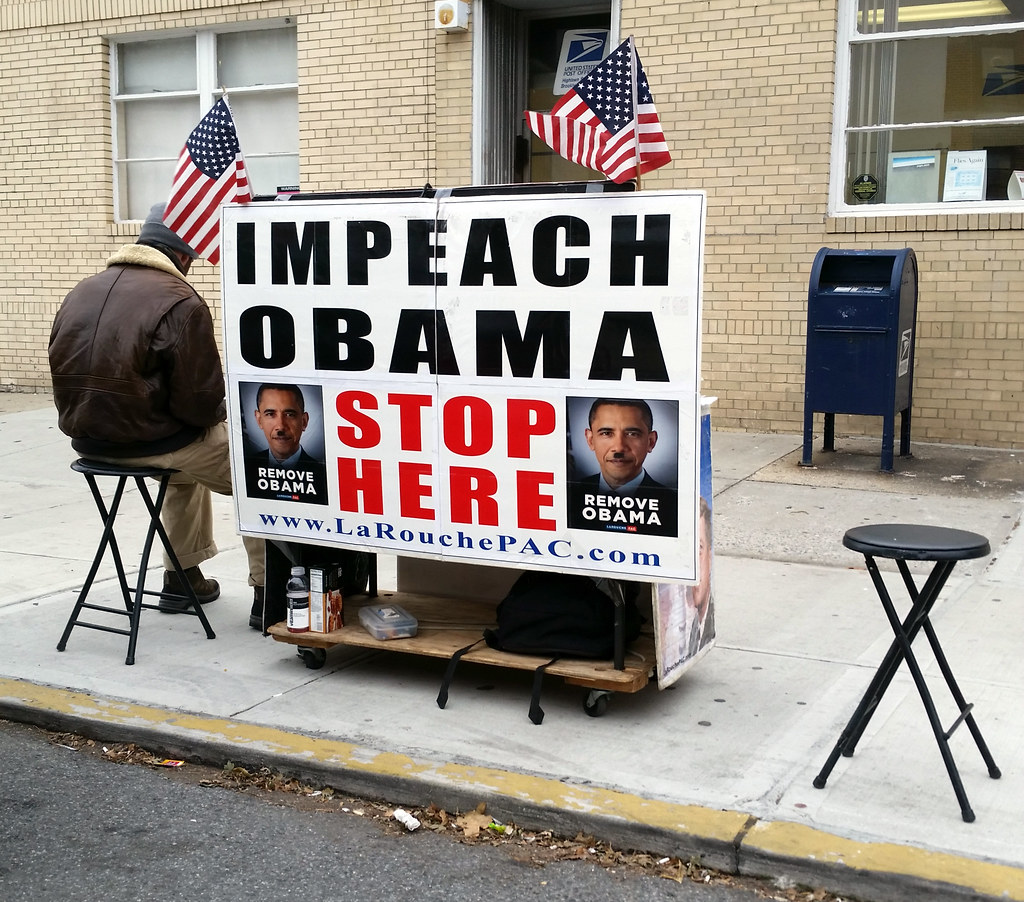
is to draw Hitler mustaches on your opponents.
From the June 18, 1989 NY Times:
For the last two decades Mr. LaRouche's followers have helped him play out his fantasy that he is the leader of a Platonic ''humanist'' elite battling a centuries-old conspiracy of oligarchs who are hellbent on subjugating the planet. Mr. LaRouche, who actually seems to believe the nonsense he spouts, hasn't had to work a day since he started running his weird show. All expenses are paid by his acolytes, who peddle tracts and magazines in airports and persuade elderly people to donate (or ''loan'') large amounts of money to fight the conspirators.
Lately it seems that the conspirators are winning. Earlier this year, Mr. LaRouche was sentenced to 15 years in prison on charges including mail fraud involving almost $300,000 in defaulted loans. Mr. LaRouche attributes his misfortunes to the conspiracy, an unlikely collection of collaborators said to have encompassed at various times Henry Kissinger, Timothy Leary, the K.G.B., the F.B.I., the Anti-Defamation League, the Rockefellers, Bertrand Russell, the British monarchy, Isaac Newton and Aristotle.

This congregation was established in 1900 and is, as its website points out, the southernmost Presbyterian church in the city.
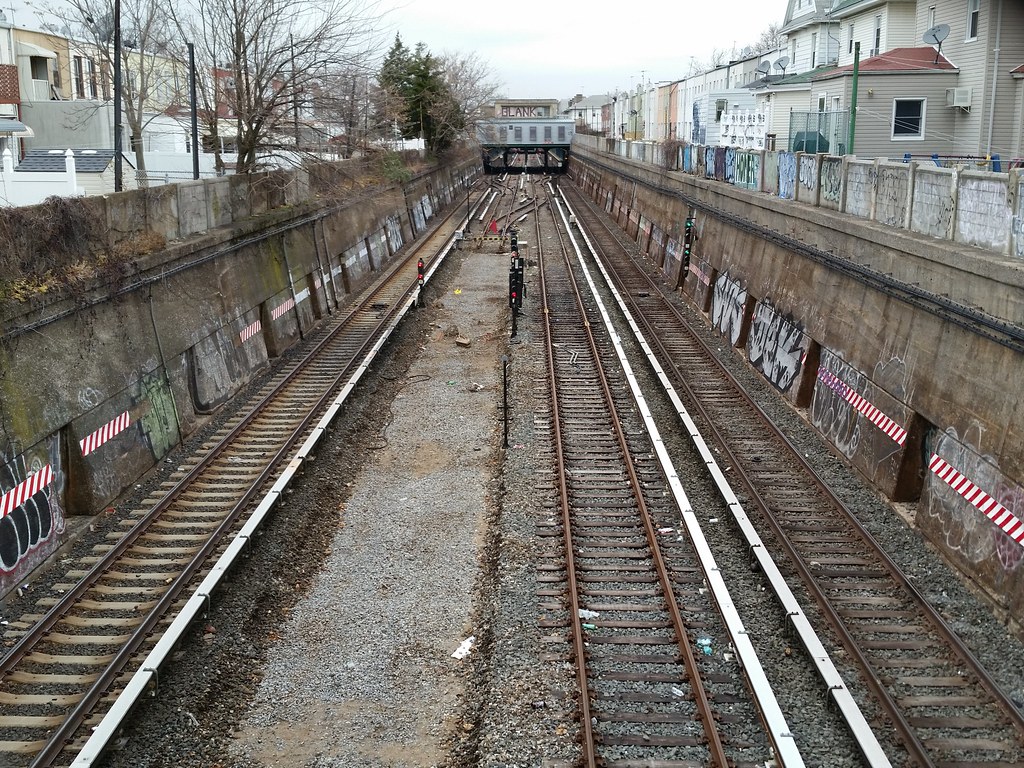
It looks like the southbound express track on the Sea Beach Line (N train) was removed quite recently starting from this point just south of the Kings Highway station. The express (inner) tracks on this line haven't been used for regular passenger service in decades, and the southbound track is largely abandoned north of here.
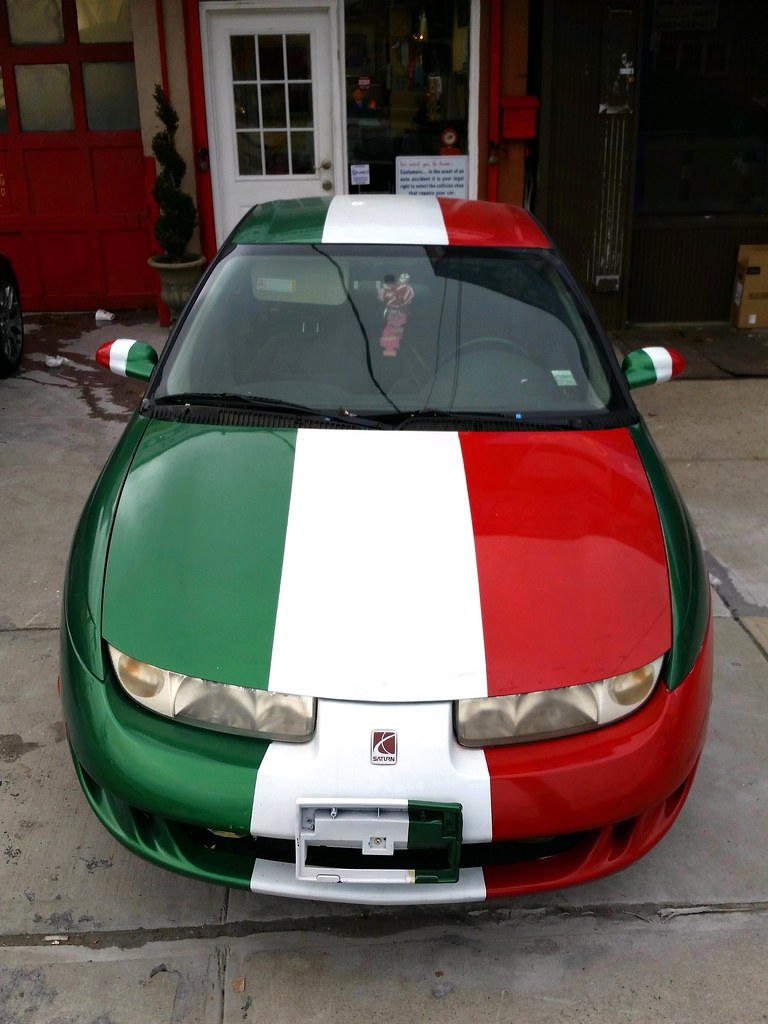
This car is parked in front of Maria Stella Auto Body.
Stepping into the Street View time machine...
August 2011: The name of the body shop is Dependable Auto Body. There are no national colors on display.
June 2012: Same as above.
September 2013: There is now a (seemingly closed) Mexican deli next door with two Mexican flags on its awning. The body shop has likewise added two Italian flags, one at the top of the building and one in the window. (Italian and Mexican flags are almost identical in color.) The Saturn is now parked in front of the body shop with "FOR SALE $1,500 WOW" written on its windshield, but it's just a plain red car at this point.
October 2013: The Italian flag in the window of the body shop is gone. The Saturn is still there.
September 2014: The Mexican deli has become a flagless stair supply business. The Italian flag atop the body shop is also gone, but the Saturn has acquired the flag's colors and no longer appears to be for sale. The body shop now has its current Italian-sounding name.
October 2014: The Saturn is still there, and the stair supply store seems to have gone out of business.
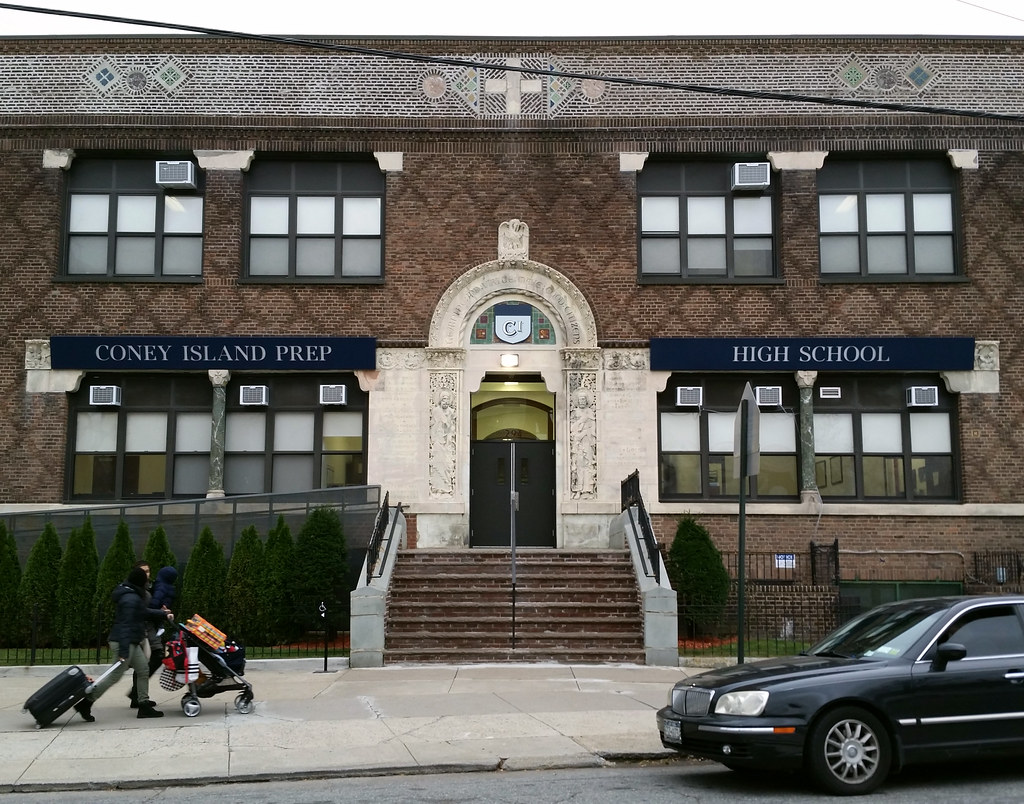
A public charter school located in the former Saints Simon and Jude School building
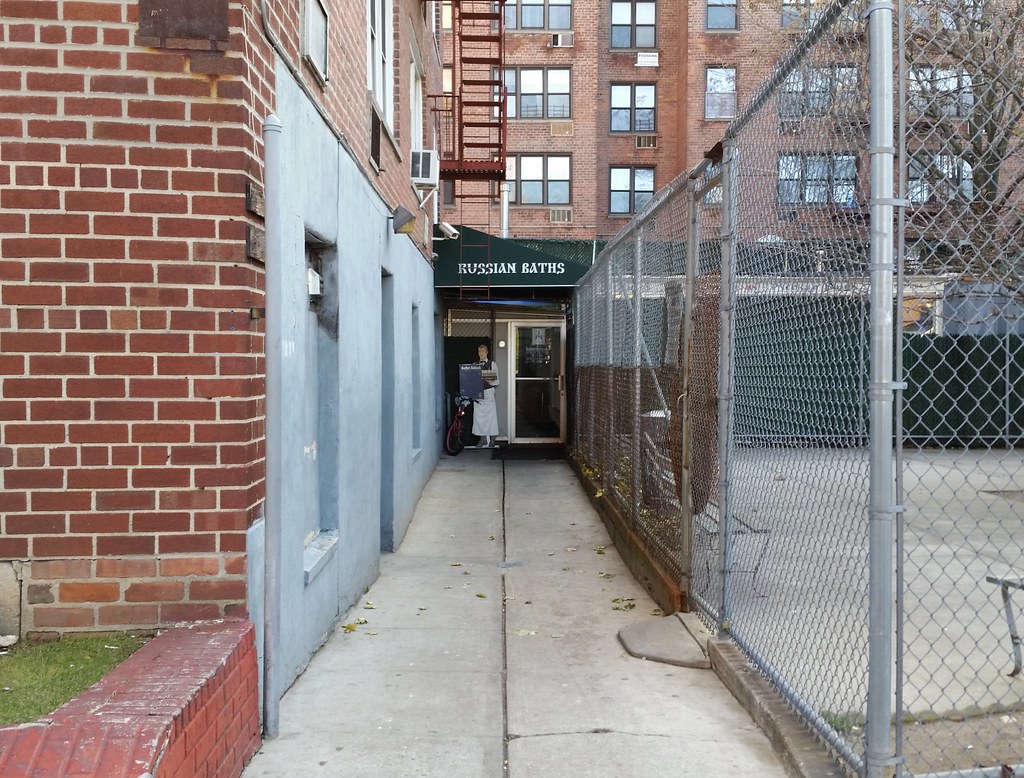
Founded in 1980, this is the oldest banya (Russian bathhouse) in Brooklyn. And you can virtually walk around inside it in Street View! See how many oak veniks (used in platza) you can find.

Pardon the abrupt transition, but it turns out that this narrow little block-long street, Lawn Court, was once home to Jacob Tannenbaum, a Jewish Holocaust survivor who, in his 70s (somewhere between 72 and 79, from what I've read), was stripped of his US citizenship (though not deported) after confessing to charges that he served as a kapo, or inmate overseer, at a concentration camp, "brutalizing and physically abusing prisoners outside the presence of German SS personnel."
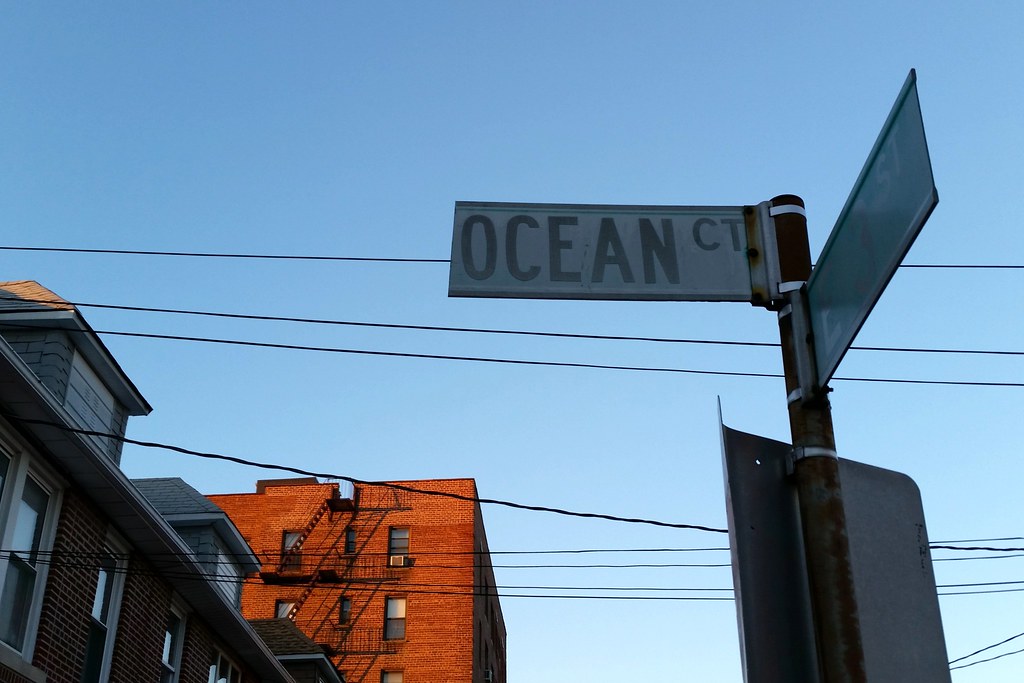
This two-block-long street is more than a mile from the ocean. But like its neighbor one block to the south, Parkway Court, it is bisected by Ocean Parkway.

This "one-of-a kind home" was designed and built around 1950 by the late Edward Ferenczy, whose wife Eleanor still lives here. The chimney and dining room are made out of stones that the Ferenczys gathered from the property.
When Edward was a young man, he and his father and brother built a 30-foot-long boat named the Margeann, which sat in the yard here for many years and was still around when the Street View car passed by in 2007. (I'm not sure what the story is with the smaller boat and the buggy seen in this 2013 Street View image.)
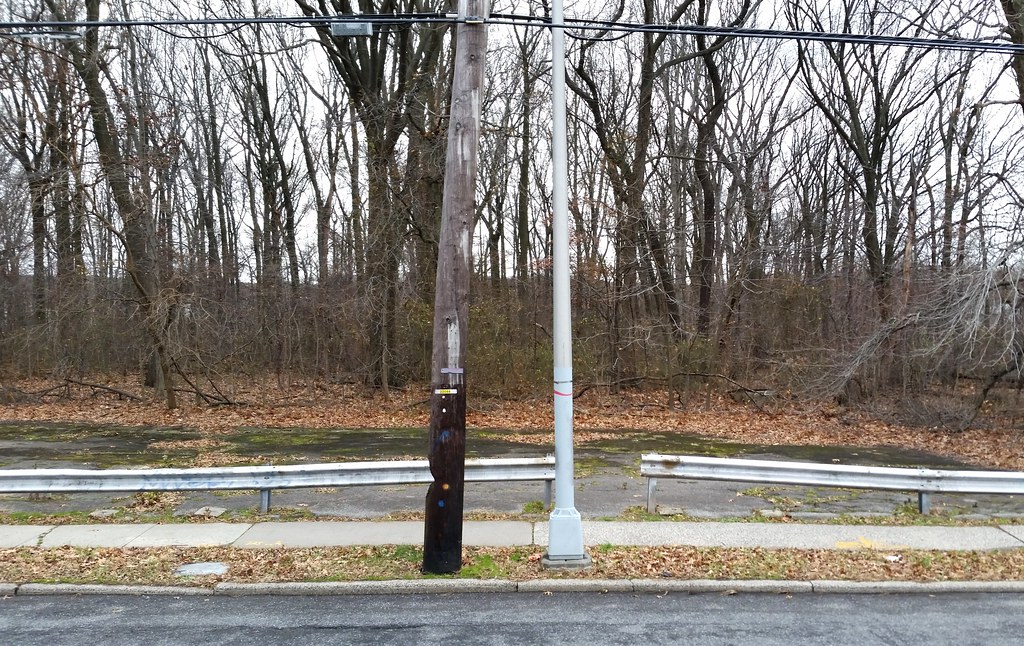
This park, formerly named Sunrise Hill Park, was jointly developed by the city and a local community organization in 1973. The community funded the installation of "a tot basketball court, a Swedish gym/obstacle course, a trail blazer slide, 'frontier post,' steam engine replica, park benches, round tables, asphalt, grass and a few trees." However, it wasn't long before "local teenagers" destroyed the new playground equipment, and the park was returned to its natural state by 1980. I wonder if the asphalt pad behind the guardrail is a remnant of the old playground.
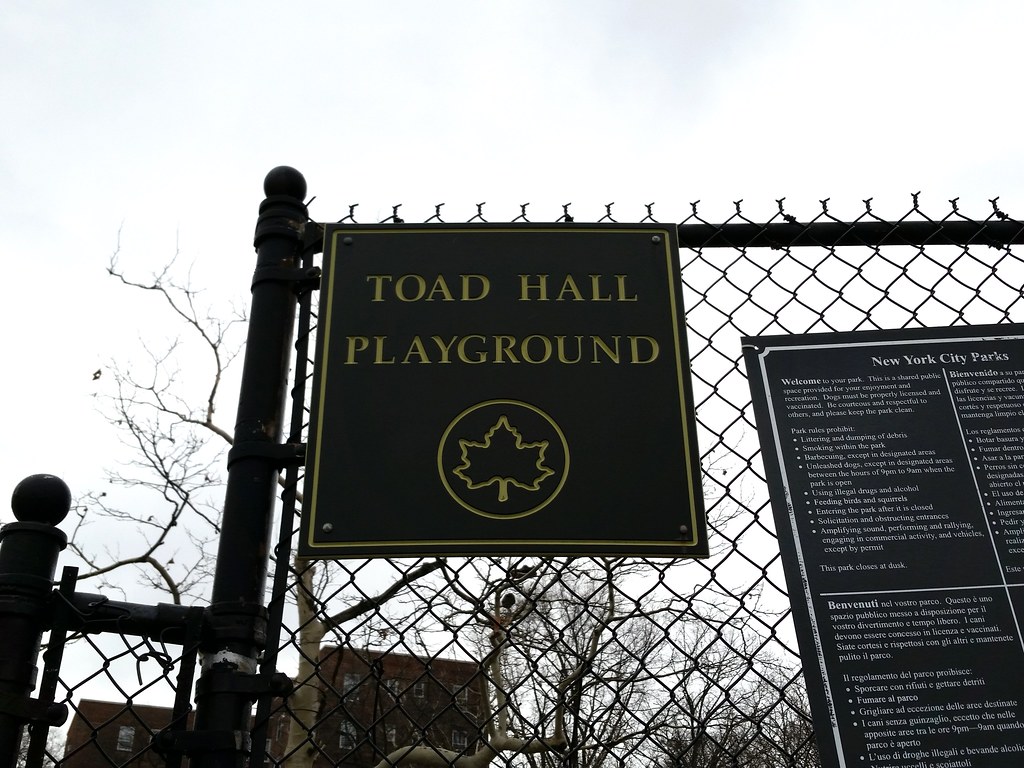
Next to the Todt Hill Houses, we find Toad Hall Playground — hmm, I wonder who came up with that name...
From the Parks Department's website:
The playground was initially called Todt Hill Houses Playground, emphasizing its link to the housing project and the neighborhood. Commissioner Stern renamed it Toad Hall Playground in 1997, echoing both the former name and the place in Kenneth Graeme’s 1908 children’s classic The Wind in the Willows. This book chronicles the adventures of four friends - Toad, Mole, Rat, and Badger - who live along a river in the English countryside. . . . The Wind in the Willows has been a popular bedtime story for generations of children worldwide.Mr. Stern loved to unleash his powers of free association on the nomenclature of the city's park system, but his efforts apparently ruffled some feathers in this case. According to a commenter on a photo essay about the Todt Hill Houses:
There is an ongoing issue which is the Todt Hill Playground was re-named Toad Hall Playground which many of us who lived there were very upset. I have spoken to the Borough’s office and were told that is was changed because the new name represents an old English background. what this has to do with the Todt Hill Houses is nothing more then someone’s ego to make changes that they were not a part of.
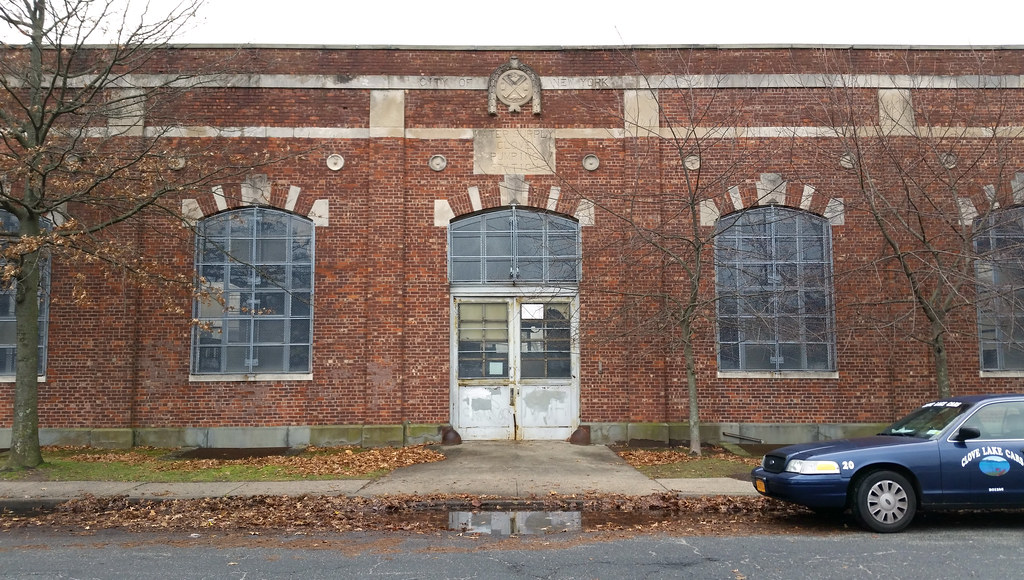
This seemingly inactive pumping station stands just a few hundred feet north of the artesian well (now closed off to the public) that we visited back on Day 1. Like the well, the pumping station is located on what was formerly the property of the Crystal Water Company, one of the private companies that supplied well water to Staten Islanders in the days before the island had access to NYC's superior upstate water supply.
Crystal Water built a pumping station here in 1886; in 1906, the station comprised 56 wells and three pumping engines. The city acquired Crystal Water in 1909, and even after Staten Island was connected to the new aqueduct from the Catskill Mountains around 1917, the city continued to run the wells here to meet the island's increased demand for water. Around 1923, it was decided that the pumping station needed to be replaced, and that the wells would be eliminated, as they had become less and less productive over the years. While no longer a source of water, the new pumping station (above), which went into service in 1928, continued to provide the increased water pressure needed to serve the areas of higher elevation on the island.
Next door stands a very similarly styled building with a sign that reads "Staten Island Water Maintenance", whatever that means. A guy working there told me it now serves as the pumping station, which makes sense because the pumping station above looks like it's just being used as storage space at this point.

This house, or at least the steep-roofed portion on the right (which looks particularly charming when viewed from Clove Road, at right), dates back to around 1840. In recent years, it was home to the law offices of Ronald Castorina Jr., who is currently the Republican Board of Elections commissioner for Staten Island.
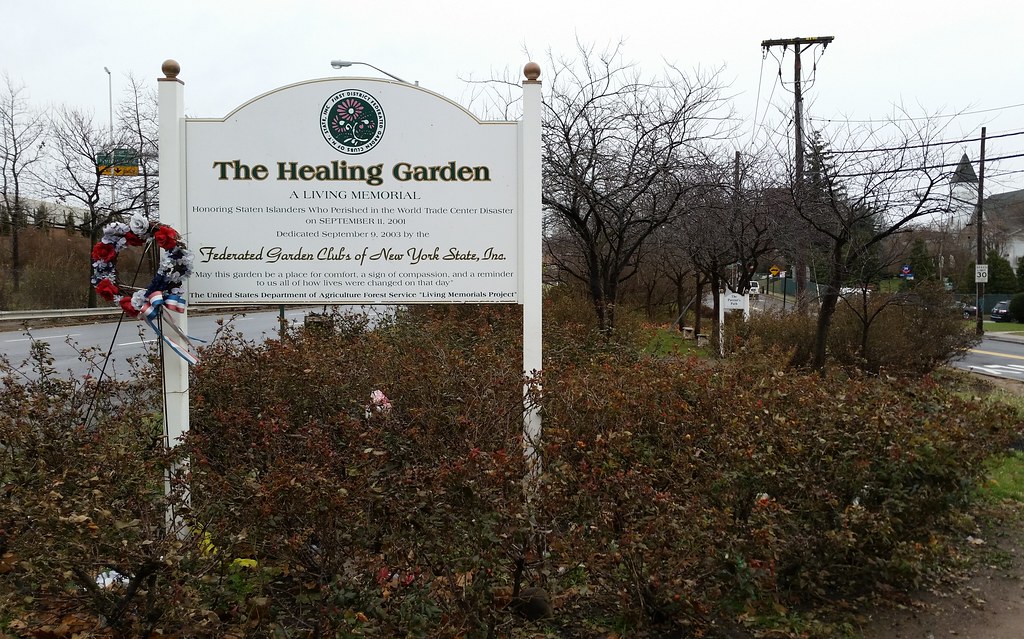
The Healing Garden (photos) is a memorial to Staten Island's 9/11 victims. It occupies a formerly weedy strip of green space that served as a parking lot on 9/11 for members of nearby FDNY Rescue Company 5 — eleven of whom never returned home from the World Trade Center. The garden includes, among other things, a Fireman's Grove — 78 smoke trees planted in honor of the 78 Staten Island firefighters who died on 9/11 — and a piece of steel from ground zero.
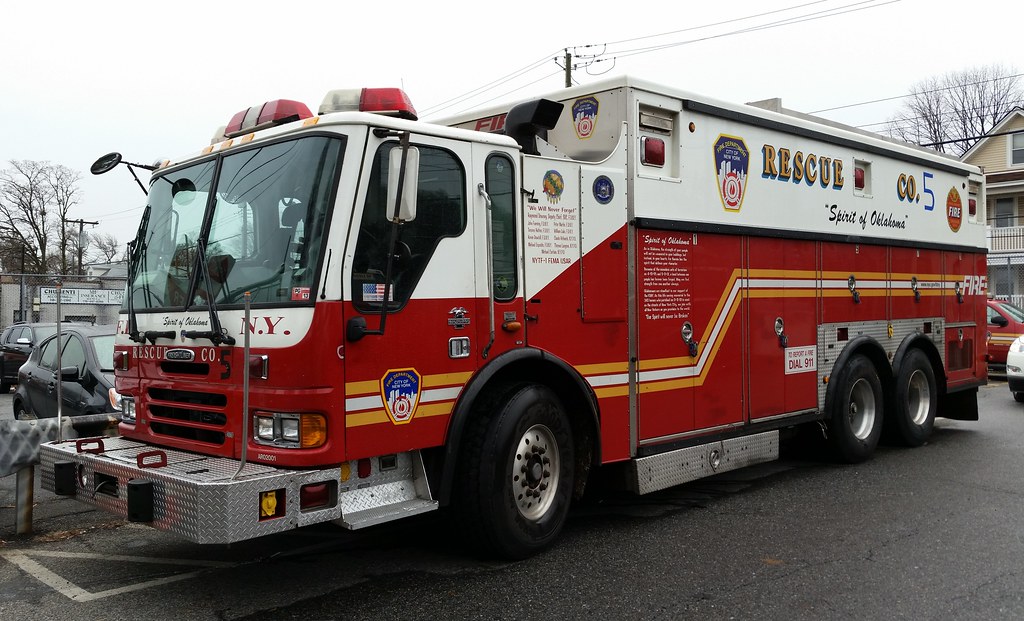
The white text on the side of the truck reads:
"Spirit of Oklahoma"Beside the driver's door (close-up) is what appears to be a list of FDNY and NYPD 9/11 victims who had previously assisted with the search and rescue efforts after the Oklahoma City bombing as part of FEMA's Urban Search and Rescue New York Task Force 1.
As in Oklahoma, the strength of your people will not be measured in your buildings, but instead, in your hearts. For therein lies the spirit that defines your character.
Because of the senseless acts of terrorism on 4-19-95 and 9-11-01, a bond between our people has forever been forged. May we find strength from one another always.
Oklahomans are steadfast in our support of the FDNY. As this life saving memorial to the 343 heroes who perished on 9-11-01 is used on the streets of New York City, we join with all New Yorkers as you proclaim to the world,
"Our Spirit will never be Broken"
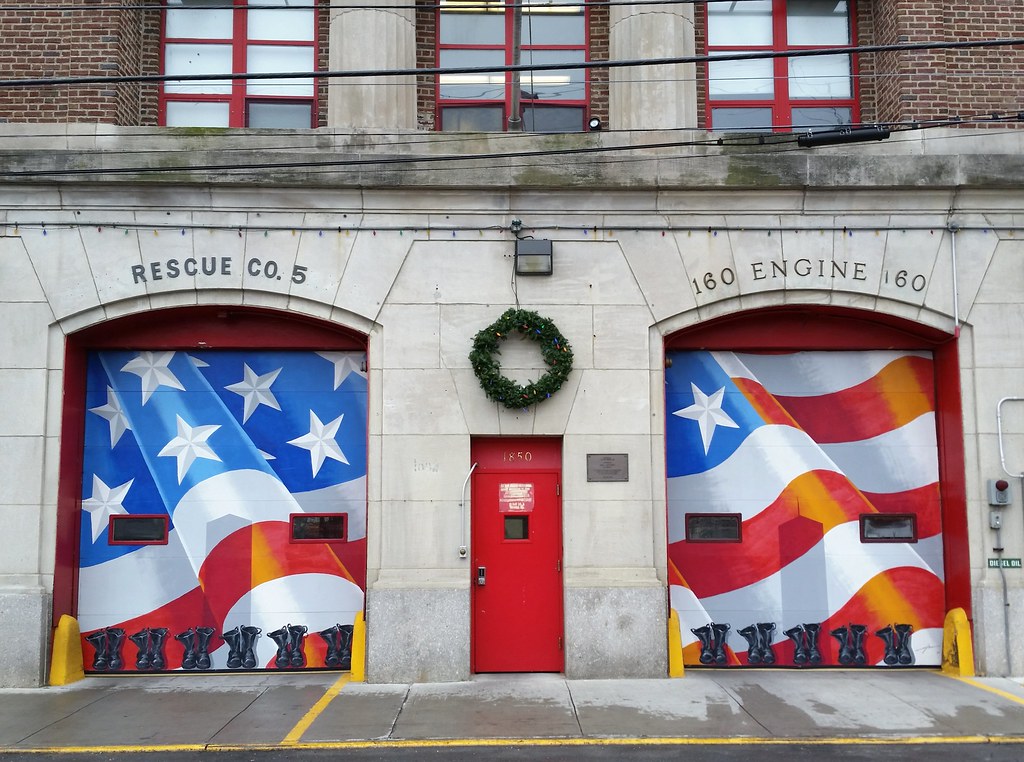
These eleven pairs of empty boots memorialize the eleven members of FDNY Rescue Company 5 who died on 9/11. There's also an honorary "Eleven in Heaven Square" street sign here on Clove Road.
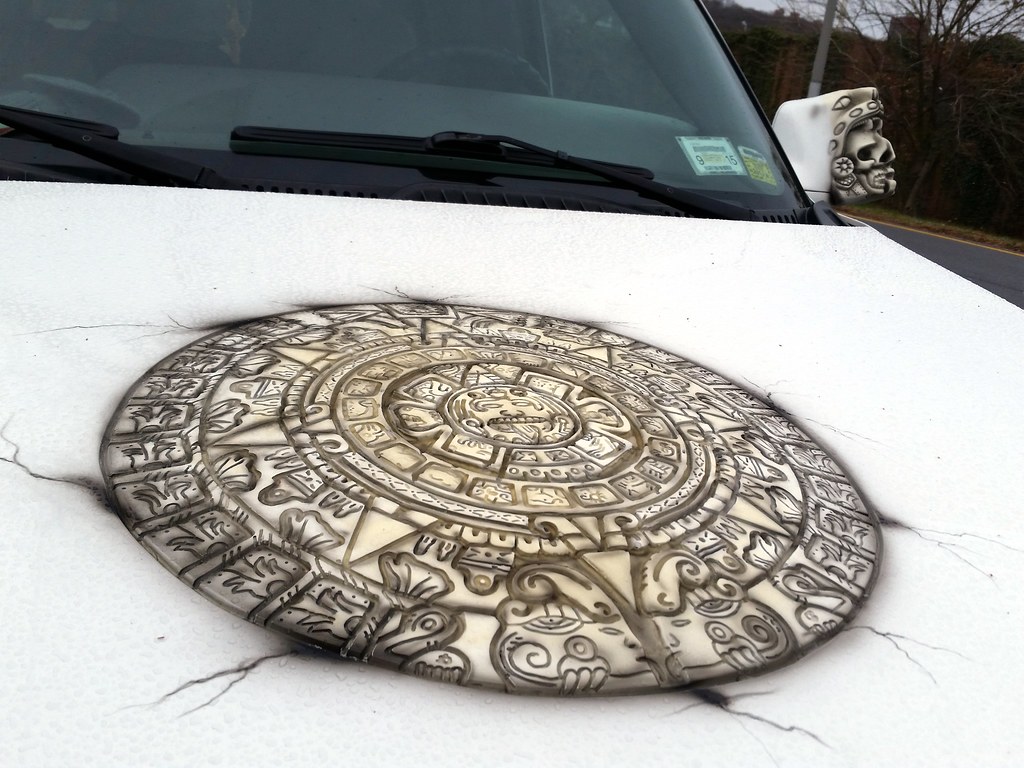
This SUV is adorned with several three-dimensional pieces of Aztec-like art, including the version of the Aztec calendar stone you see in the center of the hood above (the cracks are painted on). More photos here.
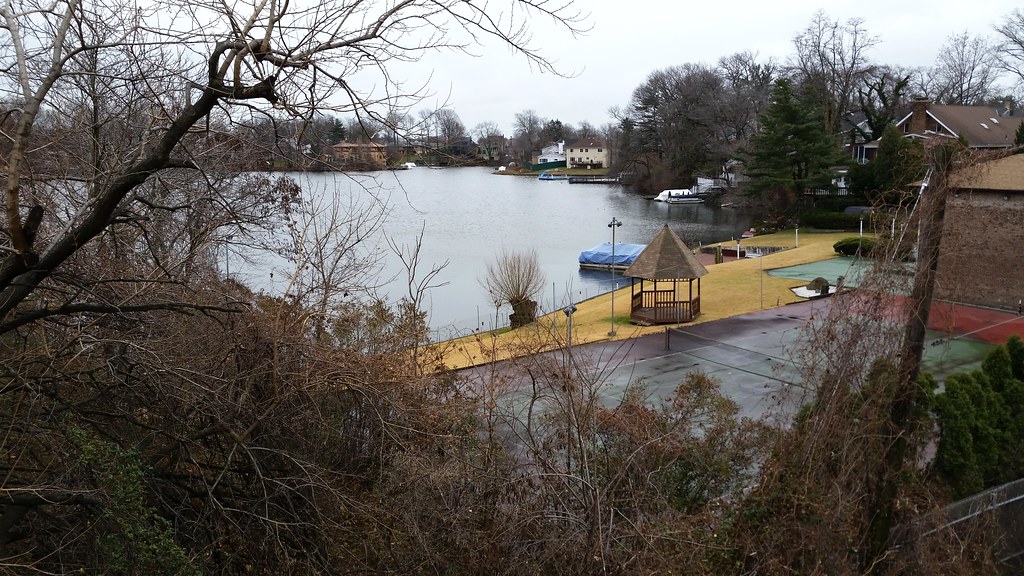
Most of Brady's Pond, including the artificial beach built out over the water, is privately owned and open only to members of the Cameron Club. There is a modicum of public access, however: the north/northeastern shoreline, along with a sliver of the pond itself, is part of an undeveloped piece of parkland called Brady's Pond Park.
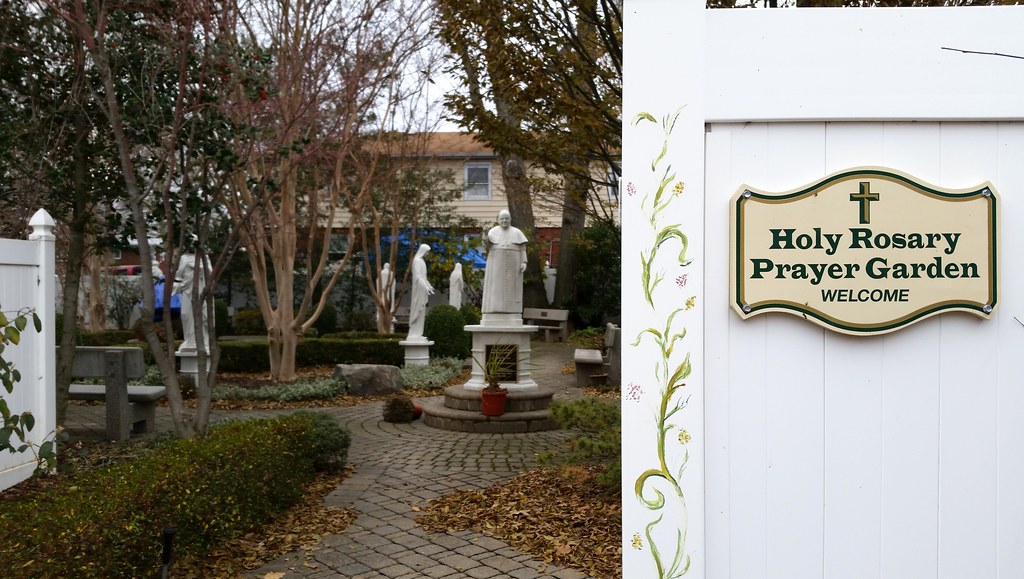
The garden itself is not a memorial, but three of its statues are dedicated to 9/11 victims.

